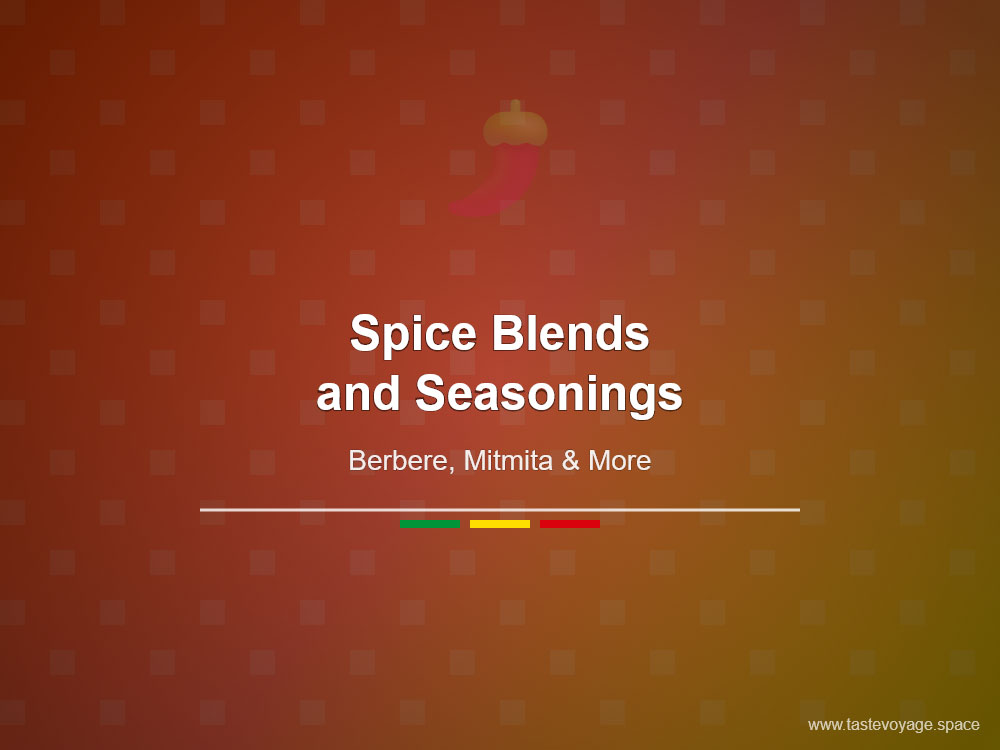Master the Art of Ethiopian Korarima Spice: Tips & Techniques
Travel the World Through Food >> Ethiopian Cuisine>>Spice Blends and Seasonings>> Master the Art of Ethiopian Korarima Spice: Tips & Techniques
Master the Art of Ethiopian Korarima Spice: Tips & Techniques
Discovering the Rich Heritage of Ethiopian Korarima Spice Techniques
Ethiopian Cuisine is renowned for its vibrant flavors, unique ingredients, and deep cultural roots. Among its most treasured spices is korarima, also known as Ethiopian cardamom. This aromatic seed holds a special place in Ethiopian culinary traditions and offers a glimpse into the country’s rich cultural tapestry. Understanding the techniques behind using korarima elevates the appreciation of Ethiopian dishes and highlights their culinary significance.
The Cultural Significance of Korarima in Ethiopia
Korarima is more than just a spice; it is a symbol of Ethiopia’s culinary identity. Cultivated mainly in the highlands, this spice has been an integral part of Ethiopian cooking for centuries. It is traditionally used in a variety of dishes, from Stews and lentils to bread and beverages. The process of selecting, drying, and grinding korarima reflects a long-standing appreciation for quality and flavor. Its distinctive aroma and taste distinguish Ethiopian cuisine, contributing to the country’s rich gastronomic heritage.
In Ethiopian culture, korarima is often associated with hospitality and celebration. It embodies the warmth and generosity that are central to Ethiopian social life. When preparing traditional dishes, the careful handling of korarima exemplifies respect for culinary customs passed down through generations. This spice connects Ethiopians to their ancestors and reinforces cultural continuity through food.
Culinary Significance and Unique Flavor Profile
Korarima’s culinary importance lies in its ability to impart a complex, aromatic flavor that enhances many dishes. Its subtle, peppery notes are complemented by hints of citrus and earthiness. This makes it an ideal addition to various traditional Ethiopian recipes, enriching their taste and aroma.
The spice’s versatility allows chefs and home cooks to craft diverse flavor profiles. Whether used whole or ground, korarima brings depth and warmth to hearty stews, flavorful lentil dishes, and fragrant bread like injera. Its presence in Ethiopian cuisine exemplifies the importance of spices in creating layers of flavor that define the national palate.
Preserving Traditional Techniques
Mastering the techniques of using korarima is a testament to Ethiopia’s dedication to preserving culinary heritage. Traditionally, the spice is carefully harvested, sun-dried, and sometimes lightly roasted to unlock its full flavor potential. Grinding korarima just before use ensures maximum freshness and aroma. These practices underscore the importance of respecting the spice’s natural qualities and maintaining the authenticity of Ethiopian flavors.
Culinary artisans often pass down these methods through generations, emphasizing the significance of tradition in Ethiopian cooking. This attention to detail reflects a broader cultural reverence for food as a sacred and unifying element of community life.
Celebrating Ethiopian Culinary Artistry
The techniques surrounding korarima exemplify Ethiopia’s rich culinary artistry. From sourcing the best quality seeds to handling and preparing them with care, Ethiopian cooks demonstrate a deep respect for their ingredients. These methods highlight an intricate knowledge of spice properties and an unwavering commitment to flavor excellence.
By appreciating these techniques, food enthusiasts can better understand the cultural depth woven into Ethiopian dishes. It invites us to celebrate the artistry and tradition that have shaped Ethiopia’s vibrant food landscape over centuries.
Conclusion
The art of using korarima spice in Ethiopian cuisine is a beautiful reflection of the country’s cultural heritage and culinary innovation. Its distinctive aroma and flavor carry centuries of tradition, connecting past and present through every dish. Exploring these techniques allows us to appreciate not just the spice itself but also the cultural stories it tells. Ethiopian korarima techniques remind us of the enduring power of food to preserve heritage, foster community, and celebrate the richness of life.
Ready to dive into Ethiopian flavors? Embrace the tradition, savor the aroma, and enjoy the journey into one of Africa’s most vibrant culinary worlds.
